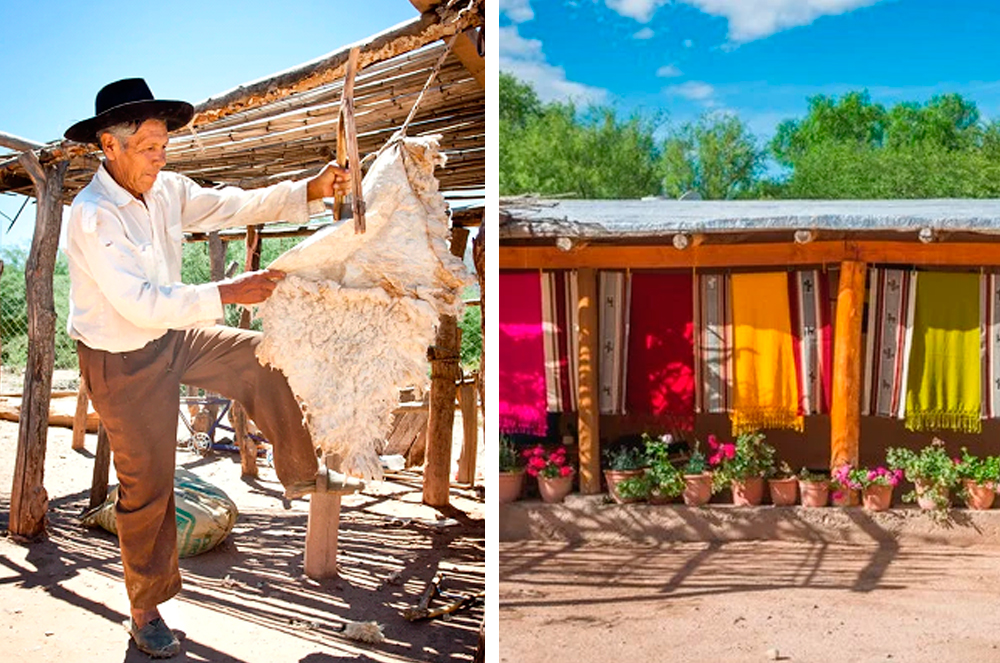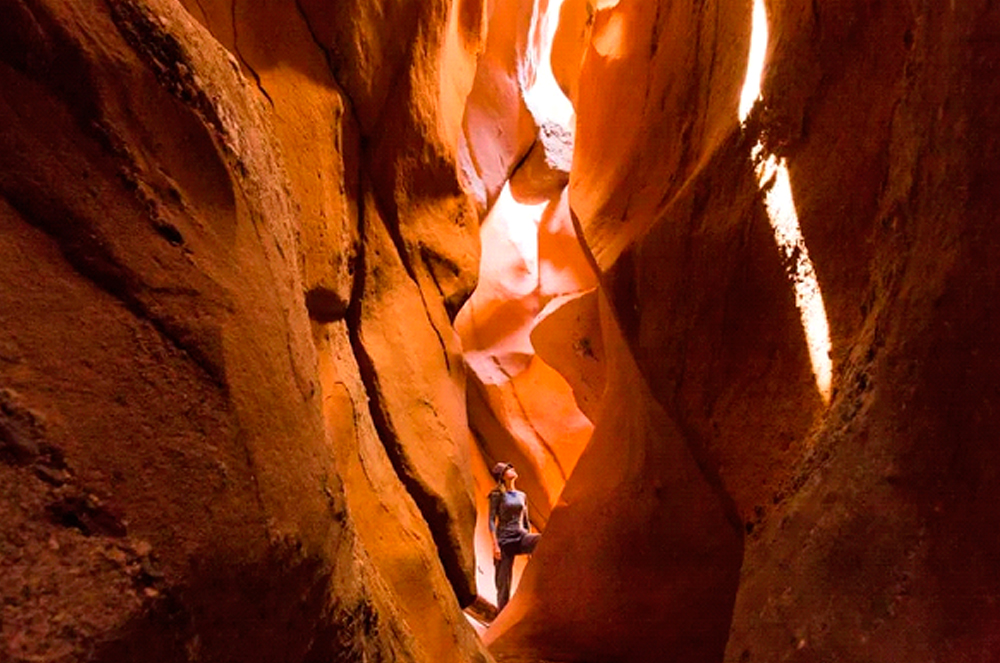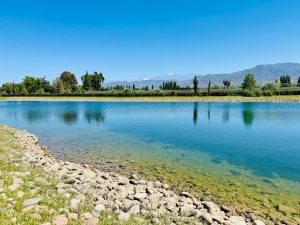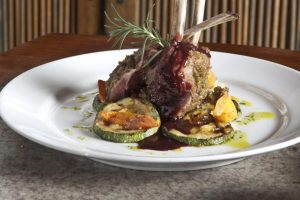Self-drive Adventure to The Calchaquí Valleys
High-altitude vineyards, peppers drying in the sun and hand-woven ponchos in the same setting where native tribes and Spaniards fought hand-to-hand. From the Quebrada de las Conchas to Los Cardones National Park, passing through the Quebrada de las Flechas, an impressive tour of Salta in 160 km.
La Poma, Salta

Where to start the road trip to the Calchaqui Valleys in Salta
It is a perfect road trip to start in Salta city, stop in Cachi on the way to Cafayate. It is worth going north to La Poma and south to Santa María (Catamarca), passing through Colalao del Valle in Tucumán.
Do not be afraid of the gravel: it is nothing less than the national route 40, the backbone of our country. It is usually in very good condition outside of the rainy season (in summer). Even in January and February, they are not forgotten roads by God's grace: they can be closed for hours, or even days, but sooner or later the National Highway machines pass by.
The national route 68 that connects Salta with Cafayate is all asphalt, 190 km of pavement that were completed in 1979, after a titanic work of modifying the layout to shorten distances. At that time, the attractions closest to Cafayate, such as Los Médanos and Quebrada de las Conchas (with the incredible surroundings of the Amphitheater and it’s amazing natural acoustics), were not a scenic excursion, but rather a true road challenge. A little more gentle may be the Cuesta del Obispo, a splendid road that connects, in mere 160 km, the capital of Salta with Cachi, passing through the TinTin straight. It is about 12 km road framed by the cacti and the mountains, an Inca memory path that the pre-Hispanic man would have traced marking it with torches at night. La Cuesta itself is only 20 km of gravel, and if they never finish being paved it is because it is proven that the pavement would never resist the landslides caused by the summer rains.
So it is advisable to avoid the Cuesta del Obispo when it rains, not only for safety, but also because you would miss the Valle Encantado, Los Cardones National Park, the Quebrada de Escoipe, among other landscapes that the road offers. In total, little more than 500 km to do with various stops and the desire to chat quietly, respecting the siesta, getting out of the car, taking a genuine interest in this region that knew how to live isolated and today maintains that rare atmosphere of silence.
Cachi
Time moves at a different pace in Cachi. An important colonial town, it shares with Molinos a significant difference in terms of its foundation: the origin of both was the Hacienda; They are not towns formed around reductions or parishes of religious origin. Cachi was the fiefdom of Don Felipe de Aramburu, and his adoptive son Benjamín Zorrilla. Until the mid-1950s, the town itself was very small, only seven blocks. However, the lack of communication was legend. There were no telephones, and even in the 1960s the only way to connect was by letter or telegram. In 1967 they installed a device that communicated via Radio Pacheco with the rest of the country. Ruiz Moreno recounts in his book: "This was a unique advance for the inhabitants who queued to speak. The municipal employee who carried out this task put on a true announcer's voice, because of which he was a Municipal Councilor reader. His name was Valois Farfan". Before Cachi was filled with cement and two-story houses, in 1978 the first urban preservation plan for the town was carried out. If the cardón wood signs, the street lamps and the whitewashed houses attract attention today, know that it is not by chance. It is beauty on purpose, and welcome. Sit down to contemplate it in the square, you can visit the Archaeological Museum next to the church that offers a chronological journey from the times of the hunters and gatherers to the arrival of the Spanish. At the Oliver Wine Bar you can try the same empanadas that represented Argentina in the "Taste of London", by the hand of Fernando Trocca and Vicenta Aramayo, the local empanadera. And Donald Hess, the owner of Colomé, launched in 2015 Altura Máxima, a wine that, in addition to being top of the range, is top of the range: it boasts of being made with the highest vineyards in the world, at 3,111 meters high.
Cafayate
Settled in the foothills of the Andes mountain range in Argentina is the fertile Calchaqui Valley, part of the country’s revered north west wine region and home to the highest vineyards on the planet.
Things you can do in Calafate:
• Museo Arqueologico: This private museum is a collection from the excavation done by archaeologist Rodolfo Bravo and is worth visiting to check out the ceramics, from the black and gray wares of the Candelaria and Aguada cultures to late Diaguita and Inca pottery.
• Wine Museum: Set in the grounds of the old museum known as "La Encantada Winery”, this is a dedicated wine museum which defines the unique characteristics of Calchaquies Valleys and its ultimate wines.
• Rio Colorado: This is an amazing hike which begins at a distance of around 6 kilometers from the centre of the town and you will be able to explore more if you get a local guide. The hike includes five scenic waterfalls and the water is fresh and clean both to swim and drink.
• Quebrada de Cafayate: Valley famous for rock formations caused due to the erosion of wind and soil. There are amazing rock formations like the Giant, the Obelisk, the Priest and the Frog, the sinking Titanic. The most alluring one is the devil’s throat which is a home to a gigantic natural amphitheatre with 45 degrees cut that provides ample space to climb and is a spectacular sight.
• You can taste the incredible local produce Torrontes (white) and Malbec (red) wine at any of the wine yards and also shop for them at a cheaper price. The goat cheese at Cabras de Cafayate is also a must!
QUEBRADA DE LAS FLECHAS
If agricultural livestock production is the truest image of the valleys (it was always a highly prized region for the purity of the air that produced healthy crops, free from the pests of the more humid places), travelers like to think that the postcard of this trip is the landscape of the Quebrada de las Flechas. It is a short sector (between Km 4380 and Km 4410 of RN 40) that is part of the Angastaco Natural Monument, declared as such in 1995. The Provincial Law protects the strange geoforms inclined like arrowheads where it narrows and passes the Calchaquí river. It is advisable to go in the afternoon, and with time to climb one of them and admire the surroundings from above. After passing through the town of Angastaco, stop in El Carmen to see its 1780 church.
CAMINO DE LOS ARTESANOS
They are less than 10 km in the surroundings of Seclantás, on the other side of the river, along a minor road that has the nomenclature 55 S. There are the small ranches with the loom under the carob tree, very close to the clay oven. Few have signs, and even fewer products to sell: ponchos are usually ordered, premeditated. As did Tero Guzmán, the most famous of the Salta stakeholders, who sent one of his ponchos to John Paul II. The photo of the Supreme Pontiff dressed as a gaucho went around the world. When Francisco took office, the Tero did not spin without a spindle. He came to give her another poncho in June, shortly before he died, at the age of 75, on 9/3/2013. It goes without saying that it was, as tradition dictates, red and black: red was used by Los Infernales, the soldiers of Güemes, who added the bow, neck and black stripe as a sign of mourning, before the death of their general in 1821.
Telero de Seclantás, Salta

ACSIBI
They are amazing caves with red folds of very strange shapes, which are accessed by the bed of a dry river, about 15 km from Seclantás.
Seclantás is the only town in the Salta Valley that is on the other side of the Calchaquí River. You have to go through its church and have lunch or dinner at Inti Raymi, one of the best restaurants with authentic regional cuisine, without deco, fripperies, or a boutique atmosphere.
To get to the Acsibi Caves, today called Quebrada del Rincón, it is necessary to go with a guide. It is a place that is still little known, that hardly anyone visits on their debut in the Valleys, a magical and very different landscape, to which a separate day must be dedicated. The exit involves advancing about 17 km through the dry bed of a river, walking about two hours through a magnificent red ravine in the most unlikely ways, to finally bend down and enter the splendid caves that were once part of the Hacienda de Urbina, when the Malcachisco Indians panned gold for the Spaniards until they revolted and left no soul standing. It happened in 1603. From then until now, a time lapse of more than 400 years in which you will be surprised not to see any urbanization. At most, the ruin of some house with thick adobe walls and cardón doors that is, who knows, 200 years old?
ACSIBI. SECLANTÁS. SALTA.

COLOMÉ
It is one of the strangest landmarks that the trip proposes. An appointment that combines an unexpected lunch in a cozy bistro with a visit to a museum of light installations entirely dedicated to James Turrell, an internationally renowned North American artist. No one knew him because of these payments and that contrast, that of the gravel and the isolation of the place, versus the ultra-modern of the artistic proposal, is the one that most astonishes Argentines, and can irritate foreigners, who sometimes do not They see with such good eyes that they have crossed the world to find in the last corner of Salta the same thing that they could have seen in Berlin, Hong Kong or San Francisco. In any case, the experience of Unseen Blue, the great work mounted in a square atrium that invites you to lie down and watch the sunset lit up from the Calchaquí sky as it changes color, is something not to be missed. In total there are nine light rooms in a space of 1,700 m2. In 2018 the ranch, which has a nine-room hotel, reopened to the public.
Our guides know how best to explore this unforgiving landscape, bringing you to interesting and secluded spots to enjoy privileged views of this beautiful part of Argentina.
Colomé, Salta







No comment yet, add your voice below!